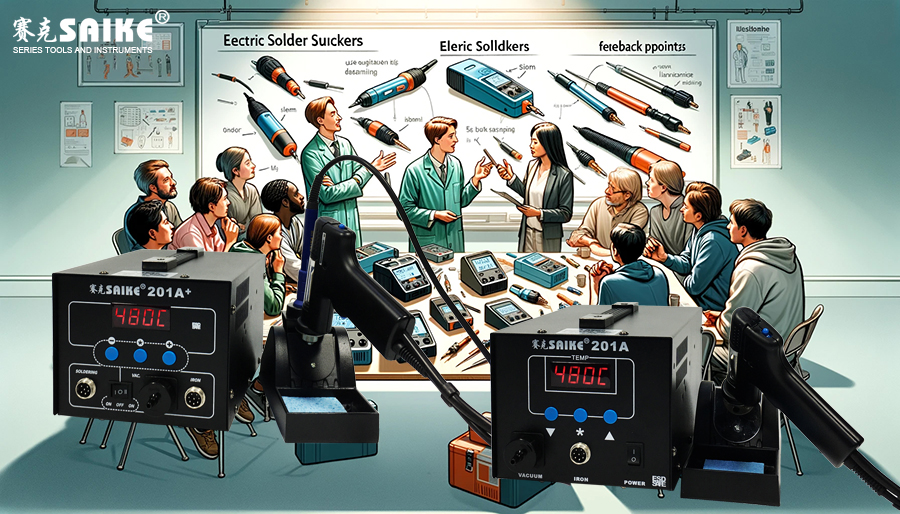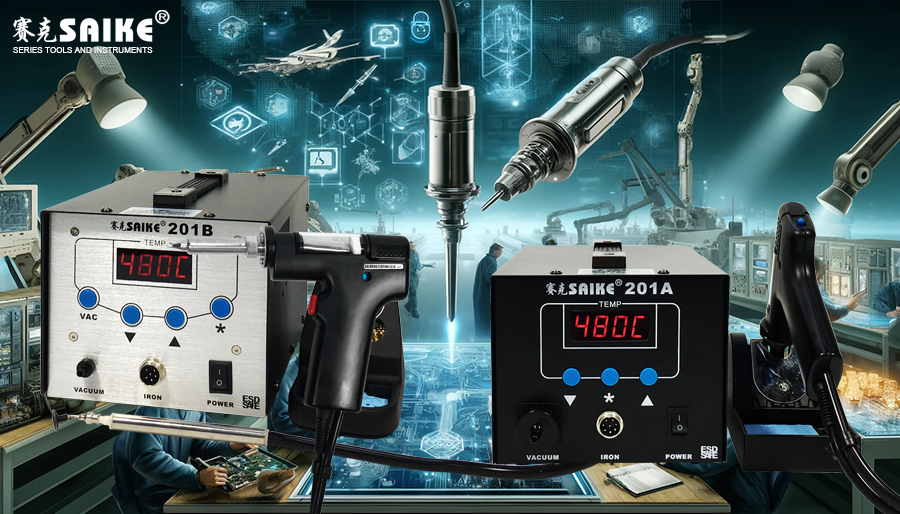
SK-YJ000DDXXQ-KP 100027
The electric solder sucker, as an essential tool in the field of electronic manufacturing and maintenance, plays a crucial role in helping learners master soldering techniques. Collecting and analyzing learners’ experiences and feedback through open discussions can provide valuable data and insights for optimizing teaching methods and improving tools. The following content summarizes learners’ feelings about using the electric solder sucker, the challenges they face, and their suggestions for improvement.
I. Overview of Learners’ Experience
1.Ease of Use
– Most learners report that the electric solder sucker is intuitive and relatively easy to use when they first try it.
– Novice learners particularly appreciate the automatic heating and fast solder sucking functions, which they believe reduce the difficulty of learning soldering skills.
2.Efficiency and Effectiveness
– More experienced learners often evaluate the solder sucking efficiency of the tool, including heating speed and solder sucking purity.
– Some learners mention that the solder sucker maintains stable performance during continuous use, which is especially important for long-term repair tasks.
3.Functional Feedback
– Some learners highly evaluate the additional functions of the electric solder sucker, such as temperature adjustment and suction control, believing that these functions improve the flexibility of operation.
– However, some learners also mention the desire for more precise control and faster response time.
II. Main Challenges Faced
1.Equipment Adaptability
– Beginners sometimes reflect that the weight and size of the solder sucker are slightly bulky for them, especially during delicate operations.
– For some particularly small or hard-to-reach solder joints, learners feel that the existing solder sucker models are not flexible enough.
2.Maintenance and Reliability
– Maintenance issues are a challenge frequently mentioned by learners, especially the cleaning and replacement of suction nozzles.
– Some learners report reliability issues with the equipment after frequent use, such as failures of heating elements.
III. Suggestions for Improvement
1.Design Optimization
– Learners suggest that manufacturers can design lighter, easier-to-operate solder sucker models, especially small versions suitable for delicate work.
– Enhance the ergonomic characteristics of the equipment, such as improving the grip design, to increase comfort during prolonged operation.
2.Technological Upgrades
– Adding intelligent functions, such as automatically recognizing the size of solder joints and adjusting temperature and suction, can help learners more precisely control the soldering process.
– Improve the durability and ease of maintenance of the equipment, especially the design of suction nozzles and heating elements.
3.Educational Resources and Support
– Learners hope for more online tutorials and real-time technical support to help them better understand and use the electric solder sucker.
– Provide regular workshops or training courses to give learners the opportunity to learn directly from experts and ask questions.
IV. Summary
Based on learners’ experiences and feedback, the electric solder sucker plays a significant role in improving the efficiency and quality of soldering learning. Addressing the challenges and incorporating learners’ suggestions for continuous improvement in the design and functionality of the electric solder sucker will enhance teaching quality and learner satisfaction. Through this open feedback mechanism, manufacturers and educational institutions can better adapt to learners’ needs and promote the progress of soldering technology education.


